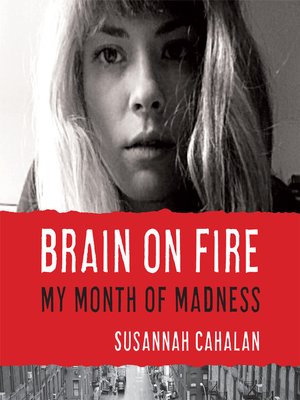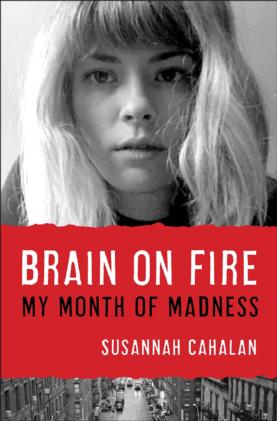
Najjar also consulted on the script, rendering it scientifically sound. I did get to consult on the medical aspects, which was a tremendous relief. As the production wore on, I began to realise that I was nothing but a bit player in my own life story.

Brain on fire movie#
(Stephen, for one, would like you to know he’s never played guitar naked.) I agonised over the director’s decision to remove my brother from the script, and I pushed (again, unsuccessfully) for the movie to add more about the long recovery process. I worried about what my loved ones would think. I got to take peeks at various stages of development, trying (unsuccessfully) to hold my tongue and tamp down my urge to cut and rewrite. Most potential book-to-movie adaptations don’t even make it past this stage.ĭespite my naysaying, the Hollywood machine started to hum. She had already secured a newbie Irishman to direct, though I had avoided watching his buzzy award-winning debut film because I feared there were only downsides: too good and I’d get my hopes up terrible and I’d be despondent.Įven with all this good news, I was sure this would be the end of the road. The answer in my case was Moretz, a superstar who was then 19. Suddenly I had a real answer to that cocktail party icebreaker: “Who would play you in a movie?” Then I got the call: The producers had secured actor Chloe Grace Moretz, who shot to fame as the superhero character “Hit-Girl” in Kick-Ass. But the film was in a holding pattern as various directors and stars became attached and then unattached. In 2013, Charlize Theron’s production company signed on to adapt the movie. I still remember the call that set this improbable chain of events into motion. Somehow against all odds, the worst moment of my life was now the subject of a feature film. The disease felled me physically and mentally - robbing me, briefly but intensely, of my wits, my sanity, my memory, my self. I could barely walk on my own or groom myself. When I was at my sickest, I couldn’t read or write. When my disease nearly destroyed me in 2009, my doctors thought I’d be lucky to regain 80 per cent of my cognitive abilities. (Photo by Dimitrios Kambouris/Getty Images for Cartier) Souhel Najjar, diagnosed me with the newly discovered brain disease called auto-immune encephalitis, a treatable condition that can, in some cases, be cured with swift and aggressive treatment.Ĭhloe Grace Moretz will play Susannah in the Netflix movie. Despite the troublesome symptoms, they could not find a cause and attributed the change to a psychiatric break.

The movie, like the book, chronicles my life as a 24-year-old New York Post reporter the year of my unravelling - when overnight I became another person, a hostile, psychotic, unhinged person who was deeply ill.ĭoctors were flummoxed. It was August 4, 2015, my first day on the set of Brain on Fire a movie premiering Friday on Netflix based on my memoir. So, it was truly bizarre to watch two actors play out this intimate scene in front of the cameras in a totally different setting, as I watched on from the next room. That was the perfect moment, I thought then, to express my feelings to the man who was my new boyfriend at the time. The true story of how my husband, Stephen, and I exchanged our first “I love yous” - chronicled in my 2012 memoir Brain on Fire - occurred deep in a hallucinatory psychotic episode outside a crowded New Jersey restaurant. This isn’t close to how it really happened. It’s like nobody is really talking to me, me, Susannah. HOSPITAL / SUSANNAH’S ROOM - DAY (NEXT DAY)


 0 kommentar(er)
0 kommentar(er)
